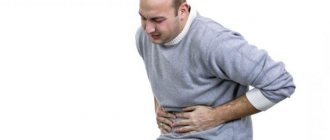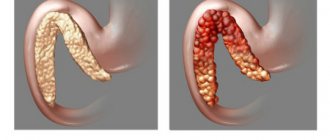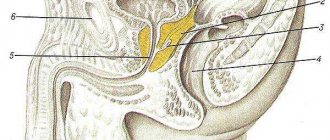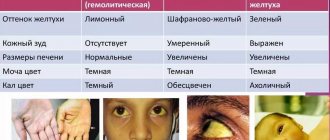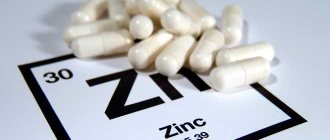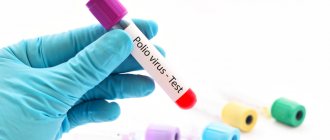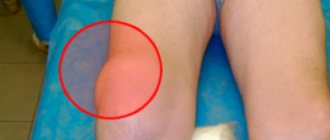Pancreatitis is an inflammatory and degenerative process in the pancreas. Every year the number of people suffering from pancreatitis increases. The symptoms and treatment of this disease directly depend on the severity of the inflammatory process and the severity of damage to the pancreas.
The main victims of pancreatitis most often are people prone to overeating, lovers of fatty foods, and alcohol. Under the influence of certain provoking factors, the production of proteolytic enzymes is activated in the pancreas, which causes inflammatory processes.
What is pancreatitis?
Pancreatitis is inflammation of the pancreas. The cause of pancreatitis is the blocking of the gland duct by gallstones, a tumor or a cyst. In such a situation, the outflow of digestive juices with enzymes into the small intestine fails. These pancreatic enzymes accumulate over time and begin to affect the tissue of the gland itself. And as a result, it turns out that the pancreas digests itself.
Such enzymes can destroy not only all tissues of the gland, but also nearby blood vessels and other organs. The result could be death.
Causes of pancreatitis
The gland is influenced by a person’s diet and his lifestyle in general. In order for carbohydrates, fats and proteins to be absorbed by the body, certain enzymes must be present in it, for example, lipase for the digestion of fats, trypsin for the digestion of proteins. When a person introduces foods in which harmful substances predominate into his diet, or when he abuses alcohol, or when he undergoes therapy with certain medications, the functioning of the pancreas is disrupted. Such a slowdown leads to stagnation of juice in the organ and its ducts. The process of digesting food fails, and as a result, a person begins to suffer from inflammation of the gland - acute pancreatitis. It can be provoked by poisoning, overeating, or injury.
Inflammation of the pancreas alone is an extremely rare phenomenon; almost always other digestive organs are involved in this pathological process. The difficulty of diagnosing its condition lies in the fact that it is located deep in the body and is small in size.
Scientists have identified a number of factors leading to the development of pancreatitis:
- Diseases of the gallbladder and biliary tract. This is the most common cause of inflammation. The fact is that when obstruction of the biliary tract has formed and when bile is refluxed, the pancreas gives a pathological chemical reaction. It accumulates substances that stimulate the work of produced enzymes against the tissues of the organ itself. There is a gradual destruction of blood vessels, the tissue of the gland swells greatly, and hemorrhages appear in it. According to available data, pancreatitis due to disruption of the gallbladder and its pathways develops in 70% of cases (if we exclude the alcoholic nature of the disease). Scientists classify the remaining causes of inflammation of the gland as idiopathic, that is, those that cannot be identified.
- Diseases of the duodenum and stomach. The release of intestinal contents into the ducts of the gland can occur with insufficiency of the sphincter of Oddi. This occurs in diseases such as gastritis and ulcers, decreased motor activity of the duodenum or its inflammation.
- Intoxication of various etiologies. Poisoning with alcohol, chemicals, food and even infection with worms - all this can lead to the formation of pancreatitis. In addition, regular consumption of fruits and vegetables with pesticides and the inclusion of foods rich in chemical additives in the menu are harmful.
- Increased blood pressure, vascular atherosclerosis, pregnancy, diabetes. Any disease that leads to circulatory problems causes circulatory failure in the pancreas. As a result, there is a disruption in its nutrition and the formation of inflammation. During pregnancy, a lack of blood circulation occurs due to the pressure of the uterus on the blood vessels and organs, contributing to the development of its ischemia. Therefore, all pregnant women are at increased risk for developing pancreatitis.
- Binge eating. If the balance of fat metabolism in the body is disturbed, the gland begins to produce enzymes in larger quantities. If lipid metabolism disorders become chronic, the risk of developing inflammation of the organ increases significantly. It is especially dangerous to include fried and fatty foods in the menu.
- Undergoing therapy and taking certain medications for this reason. The following drugs can negatively affect the functioning of the pancreas: Metronidazole, Furosemide, Azathioprine, Tetracycline, Estrogens, Glucocorticosteroids, Cholinesterase inhibitors, Thiazide diuretics, Sulfonamides and NSAIDs.
- Organ injuries. Surgeries on the duodenum and gall bladder, blunt trauma to the abdomen, and wounds can lead to inflammation.
- Allergy. Some types of pancreatitis can be triggered by allergic reactions of the body. It begins to produce antibodies that are prone to auto-aggression. Similar processes occur with pancreatitis, when the gland destroys itself. (
Pathogenesis of the disease
Inflammatory phenomena in the pancreas gradually lead to degenerative changes in its structure, tissue sclerosis and obliteration of the ductal system. This process usually occurs in waves. The exacerbation is replaced by remission, instead of the glandular tissue that produces enzymes, connective tissue appears. Gradually, enzymes become insufficient; first of all, the exocrine function of the pancreas (production of digestive enzymes) decreases, and then the endocrine function (decreased insulin production).
Symptoms of pancreatic enzymatic insufficiency appear when normal pancreatic tissue is damaged by 90%.
Triad of symptoms of chronic pancreatitis
- pancreatic calcification;
- diabetes;
- steatorrhea is characteristic of an advanced stage of the disease. Steatorrhea occurs when lipase production by the pancreas falls below 16% of its normal level.
Impaired processing and absorption of nutrients in chronic pancreatitis leads to poor absorption of proteins, fats and vitamins. As a result, exhaustion, asthenia, and metabolic disorders of bone tissue and the blood coagulation system may develop.
How does pancreatitis manifest?
Inflammation of the organ is accompanied by symptoms that echo signs of serious poisoning. In pancreatitis, enzymes remain in the pancreatic ducts or in the organ itself and destroy it from the inside. In addition, they are absorbed into the blood, which leads to the development of intoxication of the body.
So, how does pancreatitis manifest? The following signs can be identified:
- Severe pain always accompanies inflammation of the gland. They torment the patient on a constant basis, their character is cutting or dull. The pain can be so severe that it can provoke a painful shock. Their location is the right hypochondrium or left hypochondrium, or an area located slightly below the middle edge of the sternum. The exact location of pain depends on which part of the organ is affected by inflammation. If the entire gland is inflamed, then the pain is girdling in nature.
- Increase in body temperature, drop or increase in blood pressure. The more intense the inflammation, the worse the patient will feel. Body temperature rises to high values, and blood pressure surges are possible.
- Change in skin color on the face. Firstly, the patient’s facial features become sharper. Secondly, the skin turns pale and then completely becomes earthy gray.
- The occurrence of vomiting. After the vomit comes out, the patient does not experience a feeling of relief. The masses themselves contain undigested food, and subsequently bile masses. In this regard, fasting is an important point in the treatment of inflammation, which lays the foundation for further successful recovery.
- Nausea and hiccups. In addition, belching and dry mouth may occur.
- Formation of constipation or development of diarrhea. Most often, the acute phase is accompanied by the appearance of foamy, foul-smelling stools containing food particles. Constipation is often the first sign of inflammation; in parallel, the patient experiences hardening of the abdominal muscles and bloating.
- The appearance of shortness of breath. This symptom is formed due to the loss of electrolytes during vomiting. A person develops sticky sweat and a large amount of yellow coating forms on the tongue.
- Bloating. Stopping the work of the intestines and stomach leads to bloating, which is diagnosed by the doctor during palpation.
- The appearance of bluish spots. They occur mainly in the lower back and around the navel. In this case, the skin appears marbled, and in the groin area it may turn blue-green. The reason for this condition is the penetration of blood from the inflamed organ under the skin.
- Yellowing of the skin and sclera of the eyes. If sclerosing pancreatitis occurs, the patient develops obstructive jaundice. It is formed against the background of compression of the bile duct by an inflamed organ.
If a patient exhibits signs of acute pancreatitis, his condition will quickly deteriorate. This is why it is so important to seek medical help immediately.
The same signs that appear in both acute and chronic (during exacerbations) forms of pancreatitis are acute, severe pain in the abdominal area. Localization depends on which part of the pancreas is affected by the inflammatory process.
The main components of the pancreas are: head, body and tail. If the process began in the head of the gland, then acute pain occurs in the right hypochondrium; if the body is affected, then pain is noted in the epigastric region, and pain in the left hypochondrium indicates the development of inflammation in the tail. If the process covers the entire gland, then the pain syndrome is of a girdling nature and can radiate to the back, behind the sternum, or to the scapula.
Pain syndrome in acute inflammation of the pancreas is considered one of the most severe. Acute, sharp pain that occurs in the abdomen or hypochondrium tends to spread to the back, to the area of the shoulder blades and behind the sternum.
In the acute form, as a rule, stool disturbances from diarrhea to constipation are observed. Most often, patients note mushy stools with impurities of undigested food and an unpleasant odor.
Patient opinions
Surprisingly, with this pathology, all patients recommend one thing: contact a gastroenterologist and do not delay treatment! What do patients diagnosed with pancreatitis indicate? Reviews from patients report a significant improvement in well-being after drug therapy prescribed by the doctor and following the prescribed diet.
Most patients claim that after long-term treatment they were even able to return to their normal diet. And at the same time they no longer experience the characteristic painful symptoms.
How does chronic pancreatitis manifest?
Chronic pancreatitis is accompanied not only by inflammation of the organ, but also by structural changes in its tissue. Experts say that the most significant difference between the chronic form of the disease and the acute form is the progression of pathological changes in the organ even after the provoking factor has been eliminated. As a result, the patient experiences exogenous and endogenous gland insufficiency.
The initial period of chronic inflammation of the organ lasts, as a rule, up to several years. In this case, the symptoms of the disease appear and then disappear. The second period starts from the moment when the symptoms of the disease begin to haunt the person constantly.
- For several decades, the patient may complain only of periodic pain, which bothers him a quarter of an hour after eating. The pain can last from an hour to several days. Their location is the upper abdomen, sometimes pain is felt in the heart, or in the left side of the sternum or lower back. In some cases, the pain is girdling in nature. You can reduce their intensity by leaning forward or squatting.
- Pain most often does not occur spontaneously, but is the result of eating fatty, fried foods or alcohol. Chocolate or coffee can trigger an attack. If you eat several potentially dangerous foods at the same time, the pain can become unbearable. This is explained by the fact that the gland is not able to cope with various types of carbohydrates, fats and proteins at once. Therefore, those people who eat separately are less likely to suffer from pancreatitis.
- An attack of pain may be accompanied by diarrhea, nausea, vomiting, flatulence, and a person may begin to lose weight. However, these symptoms do not always bother the patient, and even if you receive symptomatic therapy, you can quickly get rid of dyspeptic disorders and continue to lead your usual lifestyle, but until the next attack.
- When pancreatitis becomes chronic and a person does not receive proper treatment, the structures of the organ are destroyed. Signs of enzymatic and hormonal deficiency appear. Moreover, such people may not suffer from pain at all. Symptoms of dyspeptic disorders often prevail.
- The patient's skin becomes slightly jaundiced. The same applies to the sclera. Yellowing of the skin periodically passes.
- When the organ atrophies completely, a person develops diabetes mellitus. (
Diet No. 5
This pathology has one unattractive name - prediabetes. Unfortunately, when it comes to chronic pancreatitis, the chances of developing such a serious disease are high. To avoid the occurrence of diabetes mellitus, patients are prescribed diet No. 5 for pancreatitis. This diet should be followed throughout your life.
The basic nutrition consists of the following products:
- milk, kefir, mild cheese, yogurt, low-sour cottage cheese;
- pasta, cereals (rice, oats, buckwheat);
- vegetables (beets, zucchini, carrots, pumpkin, potatoes);
- white stale bread, wheat crackers;
- lean fish;
- meat (turkey, rabbit, chicken, veal);
- fruit jelly, baked apples, berry sauce;
- oat decoctions, fruit juice, chamomile tea, non-acidic fruit juices;
- puree soups, vegetable broths.
The following should be excluded from the diet:
- fresh cabbage, sour fruits, legumes;
- sorrel, radish, spinach, radish;
- fresh bread, sweets, baked goods;
- spices and hot spices;
- canned food, smoked meats, sausages, eggs;
- fish, meat broths, borscht, cabbage soup;
- sweet sodas, alcohol;
- ice cream, cream, sour cream;
- fried foods.
This diet involves eating about 6 times a day, in small portions. This will avoid the risk of overeating.
Diagnostics
Gastroenterologists diagnose pancreatitis. The patient is examined, his complaints are listened to, and his anamnesis is studied. During the initial appointment, blood pressure must be measured. With inflammation of the pancreas, it is often reduced, and the heartbeat, on the contrary, increases.
To confirm the diagnosis, the patient is prescribed the following tests and procedures:
- Taking a general blood test. With pancreatitis, all signs of an inflammatory reaction are detected: the ESR accelerates, the level of leukocytes increases.
- Donating blood for biochemical analysis. This will reveal an increase in pancreatic enzymes such as lipase and amylase. Hyperglycemia and hypocalcemia are common.
- Submission of urine to determine amylase activity in it.
- Ultrasound of the pancreas is a fairly informative method in terms of detecting the disease. With its help, it will be possible to visualize the organ itself, the state of its parenchyma, and the size of the gland. In parallel, other organs of the digestive system (gallbladder, liver, spleen) are examined, which makes it possible to identify the cause of the development of pancreatitis.
- If a detailed examination is required, the patient is referred to a CT or MRI. As a rule, such complex diagnostics are prescribed for patients with complicated pancreatitis.
- Endoscopic retrograde cholangiopancreatography (ERCP) is prescribed for biliary-related pancreatitis. In this case, a probe is inserted into the main bile duct, through which a contrast agent is supplied. Then the image is taken using X-ray equipment. This technique allows you to assess the patency of the smallest ducts, identify stones in them, as well as other obstacles: strictures, kinks, adhesions.
Sometimes the symptoms of pancreatitis resemble those of other abdominal diseases.
Therefore, it is important to carry out differential diagnosis with such disorders as:
- Appendicitis and cholecystitis in the acute phase.
- Perforation of the intestines or stomach due to an ulcerative process.
- Intestinal obstruction.
- Internal bleeding.
- Abdominal ischemic disease.
In general, diagnosing pancreatitis is not difficult; often the doctor can assume inflammation of the pancreas in the patient even at the stage of questioning and examination.
Lifestyle and prevention of exacerbations
In order to prevent another exacerbation, it is necessary to adhere to the principles of proper and healthy nutrition, following all the doctor’s recommendations. Quitting alcohol and smoking will also significantly help achieve lasting remission of a chronic disease.
Limit the amount of fat you consume as much as possible. Reduce the caloric content of your diet to prevent excess weight gain. Taking medications, as well as treatment with traditional methods of treatment, is allowed only after consultation with a specialist. It is required to undergo an annual preventive examination by a gastroenterologist in order to monitor the dynamics of the pathological process and prevent the occurrence of complications and exacerbations.
An attack of pancreatitis - what to do?
Exacerbation of organ inflammation is a serious problem that can threaten not only the health, but also the life of the patient. Treatment is carried out strictly in a hospital setting, since a person may die without promptly receiving qualified assistance.
Pain and other symptoms of a pancreatitis attack
The pain is intense, non-stop. Appears in the abdomen, but can radiate to the back, lower back, or under the shoulder blade. The nature of the sensations is dull or cutting.
Such a high intensity of pain is explained by the abundance of nerve endings in the pancreas, which, when it is inflamed, are involved in the pathological process. A person may even experience painful shock during an attack.
Acute pain, similar to dagger pain, is a sign of destructive inflammation. Irritation of the peritoneum when stroking indicates its involvement in the process of inflammation. In this case, the pain recedes somewhat when pressing on the abdomen and intensifies when released. A person can reduce the pain threshold if he pulls his legs towards his stomach.
Loss of consciousness is the result of unbearable pain. If it does not tend to decline and continues to increase, then this is an extremely dangerous symptom that indicates the manifestation of the process of organ destruction.
- Pain occurs against the background of vomiting (first with food, and then with bile), flatulence and a complete lack of appetite.
- Diarrhea has a foul odor, and undigested food is found in the masses. Stool is difficult to flush away because it contains a lot of fat. Constipation and diarrhea alternate, sometimes there may be no stool for a long time.
- The pain gets worse when lying down. The forced position of a patient with an attack is sitting, leaning forward.
- Belching, hiccups occur, and dry mouth appears.
- Body temperature rises, shortness of breath and chills appear.
- The patient's tongue is coated with a whitish coating. After two days, the skin loses its elasticity, signs of vitamin deficiency develop, and weight loss occurs.
- Blood pressure drops, the skin becomes gray, and severe weakness appears.
Since such symptoms can accompany not only pancreatitis, but also other pathologies of the gastrointestinal tract, a doctor must determine the problem. This can only be done on the basis of diagnostic data.
What to do during an attack of pancreatitis?
- It is forbidden to eat any food. Moreover, you should abstain from food for 3 days. This must be done to stop the production of enzymes that increase the inflammatory response and pain. You can drink water without gas and additives.
- Cold is applied to the epigastric area - this reduces the intensity of pain and slightly reduces swelling and inflammation. It is best if you use a heating pad filled with cold water instead of ice.
- The patient should be in bed and completely at rest. This will reduce blood flow to the diseased organ, and therefore reduce inflammation.
- Approved drugs for self-administration are Drotaverine, Spazmalgon, No-shpa and Maxigan. You can drink them before the ambulance arrives. Meanwhile, it is necessary to call doctors even if the patient is not sure that he is having an attack of acute pancreatitis. After all, this pathology is dangerous because it can subside for some time and then rapidly recur.
Especially often, a rapid relapse occurs with organ necrosis. Therefore, it is so important for relatives that the patient (even despite his protests) undergo a comprehensive examination.
The three main words in treating a patient with acute pancreatitis are Peace, cold and hunger. These are the rules of first aid during an attack.
Taking any digestive enzymes can only intensify the pathological process. Proton pump blockers, in particular Rabeprazole and Omeprazole, can alleviate the condition.
If it is known that before the attack occurred, the patient was exposed to at least one of the provoking factors of inflammation (alcohol intake, overeating, trauma, etc.), then an ambulance must be called without delay.
First aid
In cases where the patient does not have the opportunity to seek help from a specialist, one should independently provide first aid and help retain gastric juice and eliminate pain. However, do not forget that in any case the patient must be taken to the hospital, especially during an acute attack of pancreatitis.
Treatment of the pancreas with folk remedies
To relieve an attack of pancreatitis you must:
- Put the patient to bed.
- Give No-shpa or Drotaverine 0.8 mg to relieve pain.
- Administer an intramuscular injection (2 ml) of Papaverine solution.
To relieve pain, you must take an analgesic or antispasmodic. The patient can drink in limited quantities - 50 ml at a time. Water should be given every 20-30 minutes. To relieve the symptoms of pancreatitis, it is also recommended:
- Don't eat!
- Apply ice to the pancreas area from the back. Thus, efficiency is enhanced.
- The patient should be in a state of complete rest, in a reclining position on the bed. Under no circumstances should you make sudden movements during an attack.
- Do shallow breathing or do a special exercise. Systematically hold your breath to reduce pain.
- Whenever there is a urge to vomit, you must take the opportunity to empty your stomach. If there is no urge, you can press on the root of the tongue several times and get rid of the contents of the organ of the digestive system.
Treatment methods
Drug treatment
If you follow a strict diet, pain in the pancreas area practically does not bother you, but as soon as you break it a little, you cannot do without painkillers.
- In case of severe pain in the pancreas, the doctor may prescribe antispasmodics, such as No-Shpa, Drotaverine, they reduce inflammation and eliminate pain in the gland. Today there is a fairly good myotropic antispasmodic that effectively eliminates gastrointestinal spasms - Mebeverine (Duspatalin, Sparex).
- If it is necessary to relieve mild pain, then the doctor may prescribe antisecretory drugs for a short course (Omeprazole or Diacarb, a tablet for three days; in case of edema, you must also take Asparkam).
- Octreotide. In addition, in a hospital, the doctor may prescribe the drug Octreotide, which inhibits the production of pancreatic hormones. Thanks to this medicine, hormones stop stimulating the pancreas and the pain goes away.
If pancreatitis becomes chronic, then normal pancreatic cells are replaced by connective tissue. In this case, the functions of the pancreas are disrupted, and as a result, digestive problems will begin, including diabetes.
To relieve the load on the pancreas and reduce pain, you must take digestive enzymes:
- Festal - take 1 tablet 3 times a day with meals along with histamine blockers famotidine, cimetidine, which reduce acidity in the stomach.
- “Pancreatin” (“Enzistal”, “Gastenorm”, “Biozim”, “Mezim”, “Mikrazim”, “Pangrol”, “Panzinorm”, “Penzital”, “Creon”, “Ermital”) - all of the listed drugs are digestive enzymes (amylase, lipase and protease), which facilitate the digestion of carbohydrates, fats and proteins.
- When taking medications, you must remember about the activity of enzymes - 10,000 units for lipase (Mezim-Forte tablet) three times a day, covers the body’s daily requirement for replacement therapy.
If pancreatitis has entered the chronic stage, then problems with the pancreas will persist for a very long time. And subsequently there is a risk of developing diabetes. If the patient has already been diagnosed with this disease, then you need to consult an endocrinologist for a diet and treatment.
Useful articles on the topic of treatment:
- Read more about drug treatment of pancreatitis
- Treatment of pancreatitis with folk remedies - 7 most effective recipes
- Treatment of pancreatitis with herbs
- Diet for pancreatitis
Features of the treatment of acute and chronic forms of pancreatitis
Treatment of acute and chronic pancreatitis will vary depending on the symptoms that the disease produces, the severity of its course and the causes that provoked this disorder. The age of a person is of no small importance.
Therapy should be carried out exclusively in a hospital setting if the patient is diagnosed with acute pancreatitis. The patient is completely restricted in food for several days. When a person is in the hospital, recovery occurs faster, since doctors exercise full control over what he eats and what medications he takes. If the patient feels nauseous or vomits, a tube is inserted to remove air and fluid from the stomach.
If health deteriorates, the patient will be provided with emergency assistance. It is possible that surgery will be required. Surgical intervention is resorted to only when there is a threat to the patient’s life. During the operation, a section of the pancreas that has undergone necrosis can be removed. It is possible to install a drainage system.
Drugs for the treatment of acute pancreatitis
For acute pancreatitis, medications such as:
- Cytostatics (Fluorouracil, Cyclophosphamide). They are used to relieve inflammation.
- Painkillers (Promedol, Ibuprofen, Analgin), antispasmodics (Papaverine, Drotaverine, Mebeverine), anticholinergics. All these means are aimed at normalizing the patient’s well-being and relieving him of pain. When conventional analgesics and antispasmodics do not help cope with the problem, the patient is prescribed narcotic drugs.
- Antisecretory drugs, pancreatic enzyme blockers (Trasylol, Contrical) - these drugs are necessary to prevent the development of complications of pancreatitis and necrosis of organ tissue. For this purpose, the patient may be prescribed proton pump inhibitors (Omeprazole, Pantoprazole, Esomeprazole).
- If inflammation spreads to other organs, or purulent complications develop due to infection, the patient is prescribed broad-spectrum antibiotics (Kanamycin, Monomycin).
- Colloidal solutions are administered to patients who experience a decrease in albumin levels in the blood. If the hematocrit falls below 25%, a red blood cell transfusion is required.
- To relieve symptoms of intoxication from the body, which develops when a significant amount of pancreatic enzymes enters the blood, the patient is administered electrolyte solutions and amino acids, without fail transferring him to parenteral nutrition.
Drugs for the treatment of chronic pancreatitis
In case of chronic pancreatitis, during the period of remission of the disease, the patient is prescribed drugs for the pancreas (Pancreatin), which is not able to cope with its function in full.
Drugs are selected based on data that will be obtained after a comprehensive examination of the patient. It is imperative that such patients undergo regular blood, feces and urine sampling.
In addition to enzymes, the patient is advised to take medications to normalize digestive processes, to enhance intestinal motility, and to stabilize the acid-base balance in the stomach.
The patient must be prescribed courses of vitamins A, C, K, E, D and group B, lipoic acid, cocarboxylase and other drugs.
The patient must follow a diet that involves avoiding fatty and spicy foods and strictly prohibiting any alcohol. When chronic pancreatitis worsens, the patient will have to fast for 1-2 days. He is allowed to drink water in small sips, or weak tea.
As a rule, after a course of treatment, the symptoms of pancreatitis disappear, but this does not mean that the person is completely free of the disease. The diet will always need to be followed to prevent re-exacerbation of the pathology.
Nutritional nature
What can you eat after an attack of pancreatitis? Compliance with a special diet plays an important role in the successful recovery of the patient. This will reduce the load on the pancreas and achieve stabilization of well-being.
After an exacerbation of pancreatitis, you can eat no earlier than 2–3 days later. In this case, you need to start by eating a small amount of food. Food should be ground and not hot. You need to eat often - up to 5-6 times a day.
Treatment with diet involves the use of steamed, baked or boiled dishes. Under no circumstances should you eat fried, smoked or pickled food. Excessive consumption of salt, sugar, pepper and other spicy seasonings should be avoided while cooking. Alcoholic and carbonated drinks, as well as products classified as semi-finished or fast food, are strictly prohibited. They contain a large amount of trans fats, which have a pronounced adverse effect on the functioning of the pancreas.
Red meat, avocados, sugar, white bread, etc. are prohibited.
A diet after an attack of pancreatitis can normalize the functioning of the endocrine organ. The patient can eat the following dishes and foods:
- Low-fat varieties of fish - hake, pike, carp, cod, pike perch, etc. It is advisable to bake the product to preserve all the useful components.
- Dietary meat - rabbit, turkey, veal, chicken breast, etc. It contains a large amount of proteins, amino acids and trace elements necessary for the human body. Meat can be stewed, steamed or added to soups.
- Boiled or stewed vegetables. They are characterized by a rich composition - they contain vitamins, microelements, antioxidants and other components. The ideal option is puree soup, which is extremely easy to digest and does not contain coarse food particles. The diet for pancreatitis excludes the consumption of raw vegetables.
- Cereals. Preference should be given to products containing complex carbohydrates. These include rice, buckwheat, and millet. Oatmeal has a positive effect on the gastric mucosa, the treatment of which is indicated not only for diseases of the gastrointestinal tract, but also pancreas.
- Low-fat lactic acid products - yogurt, cottage cheese, cheese, kefir. Helps restore normal microflora of the gastrointestinal tract. Approved for use no earlier than 2 weeks after an attack.
- Vegetable and butter. Used to add small quantities to prepared dishes.
- Herbal tea has a pronounced positive effect, which will not only help restore water balance and quench thirst, but also saturate the human body with useful substances.
https://youtu.be/YFJhfBMOIjc
»>
After a pancreatic attack, a special diet should be followed for life. If you violate the doctor's recommendations and consume prohibited foods, exacerbation of pancreatitis is possible. Therefore, you need to lead a healthy lifestyle to prevent relapse.
